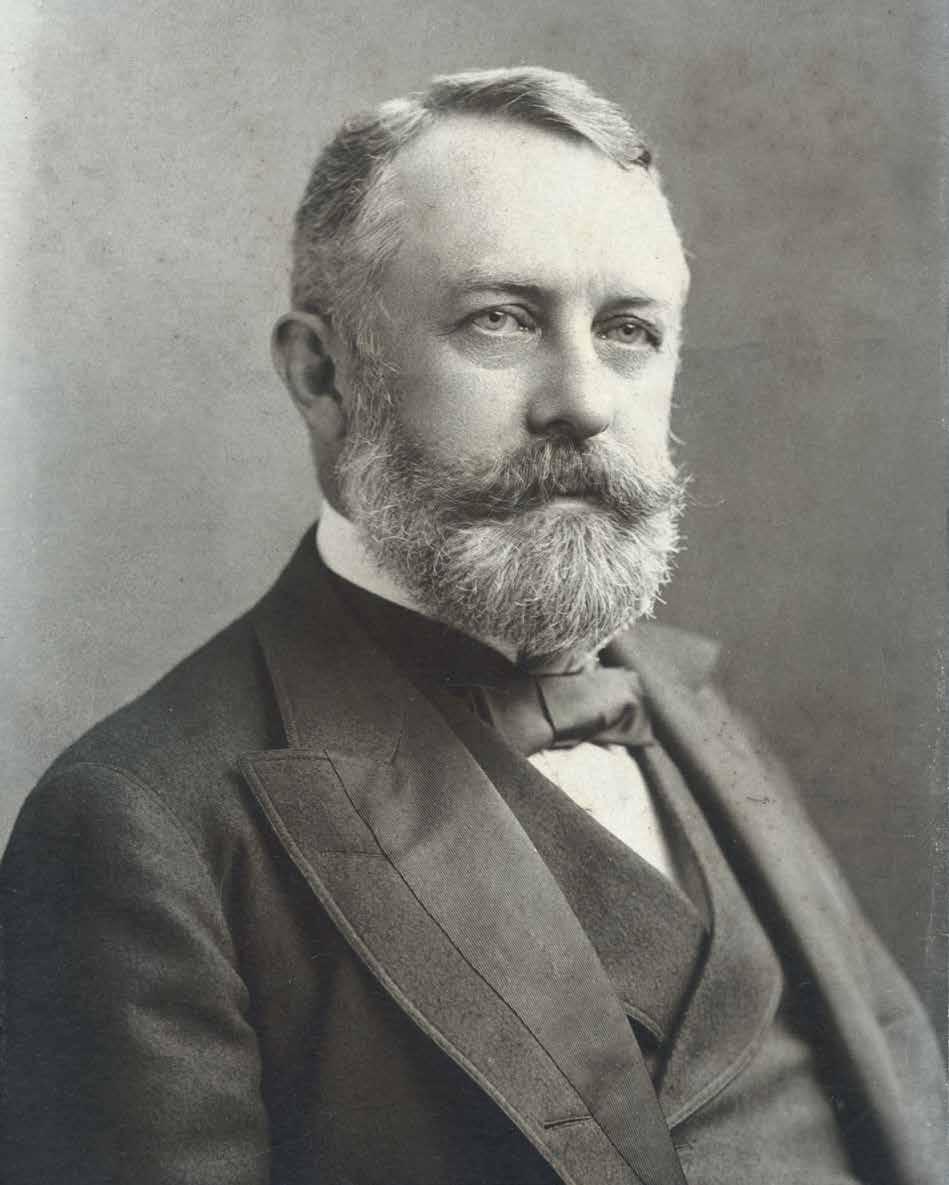OLD MASTERS, NEW WORLD: FRICK'S RIVAL COLLECTORS
Around 1870 a new era in the history of collecting dawned in the United States. It took just a few decades for a relatively small group of wealthy individuals to accumulate holdings that could vie with the centuries-old art collections of Europe. In cities like New York, Los Angeles and Boston, stately mansions were filled with riches from all periods of art history, including Dutch paintings of the seventeenth century. This collecting boom took place at a time when the American economy was experiencing unprecedented prosperity: an era known as the Gilded Age, which extended roughly from 1870 until the outbreak of the First World War in
1914. The term, which seems at first to refer to the gilt frames surrounding Old Master paintings, is actually the title of a novel published in 1873 by the American writer Mark Twain (1835-1910), who sought to highlight the problems of his day, such as the poverty that afflicted large parts of the population. Affluence, after all, was reserved for a small group of people; many others, including countless European immigrants, could barely hold their heads above water. The Gilded Age still appeals to the imagination: the term serves as the name of a recently launched television series by Julian Fellowes, the maker of Downton Abbey. While the latter series is set in England, The Gilded Age takes place in New York. It portrays the attempts of the nouveaux riches to gain a position in New York society, which until then had been dominated by old families of Dutch and English origin. The series brings nineteenth-century New York to life. It begins in 1882, with prosperous New Yorkers now able to light their homes with electric light bulbs, thanks to the inventor Thomas Edison (1847-1931). The streetscape is also undergoing sweeping changes, with electricity powering the street lamps and the trams – or streetcars, as they are called in America.
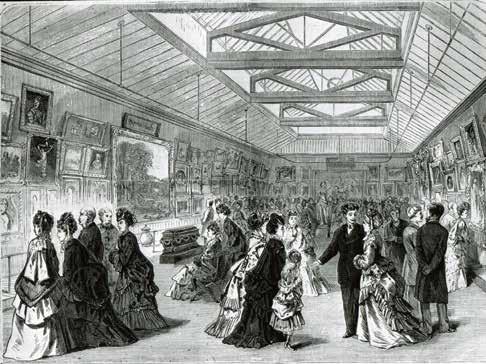
Opening of the gallery of paintings of The Metropolitan Museum of Art in its temporary accommodation at 681 Fifth Avenue, New York, 1872. From Frank Leslie’s Illustrated Newspaper, 9 March 1872, The Metropolitan Museum of Art, New York.
The residents of New York have traditionally favoured Dutch art from the seventeenth century. The museums of this city have extraordinary holdings of Dutch paintings. For example, The Metropolitan Museum of Art, the largest art museum in New York, now owns at least twenty authentic Rembrandts, eleven paintings by Frans Hals and five Vermeers. The museum opened to the public in 1872.
She was fascinated by Italian art of the Middle Ages and the Renaissance. In 1915, Bellini’s phenomenal Saint Francis in the Desert of 1475-1478 was snatched from under her nose by Frick (see p. 71). Still, she managed to lay hands on outstanding works by such artists as Titian, Botticelli and Vermeer. Gardner had distinct tastes in art, but her choices were limited by financial constraints. More than once she exclaimed how much she envied richer collectors like Frick. She had a house built in Boston that was made to showcase her art collection. It opened to the public in 1903 as Fenway Court. Today it is known as the Isabella Stewart Gardner Museum.
henry e. huntington (1850-1927) & arabella d. huntington (1851-1924), Los Angeles
As a collector, the Los Angeles-based railway magnate Henry E. Huntington focused primarily on rare books, manuscripts and works on paper. After his marriage in 1913 to the extremely wealthy art lover Arabella (his uncle’s widow), Huntington’s collecting activities expanded to include other art forms. Eventually, French and English art of the eighteenth and nineteenth centuries formed the core of their collection. Arabella also had a passion for early Italian art. With her late husband, Collis Huntington (1821-1900), she had built up a collection that included masterpieces by Vermeer and Rembrandt; these holdings were later donated by their son to the Metropolitan. The joint collection of Henry and Arabella is housed on their country estate, which opened to the public in 1928. ‘The Huntington’ in San Marino, California, consists of a renowned research library and an art museum, surrounded by splendid botanical gardens.
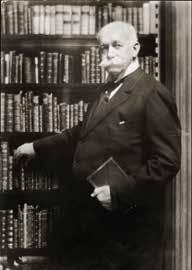
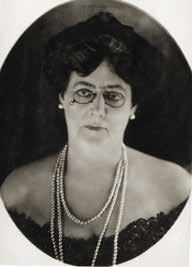
Arabella Huntington, c.1915. The Hispanic Society of America, New York.
Henry Huntington, c.1917. The Huntington Library, Art Collections and Botanical Gardens, San Marino, California.
john g. johnson (1841-1917), Philadelphia
Johnson’s gift of his carefully assembled collection formed the basis of the Department of European Art of the Philadelphia Museum of Art. One of the best lawyers in America, Johnson represented Frick in his successful lawsuit against his former partner, Andrew Carnegie (see p. 31). The two men spent a lot of time together during this trial, and presumably talked about art as well. Johnson had turned into a passionate collector, having gained his expertise in art through autodidactic study. Among those he advised was Peter Widener, who also lived in Philadelphia.
peter a.b. widener (1834-1915), Philadelphia
This businessman amassed a large art collection in which Rembrandt, the favourite of many Americans, was represented by a number of masterpieces. His youngest son, Joseph E. Widener (1871-1943), inherited both the collection and the ‘collecting bug’ from his father. In 1939 he donated the family collection that he had helped to expand to the National Gallery of Art in Washington, DC, which was founded that year.
andrew w. mellon (1855-1937), Washington
This extremely wealthy banker was U.S. Secretary of the Treasury from 1921 to 1932. In 1937, Mellon put his fabulous art collection at the disposal of what was to become the National Gallery of Art in Washington, DC, and to this unimaginably generous gift he added an endowment of $10 million. Mellon and Frick were old friends (see p. 30), but Mellon did not take an active interest in art until later in life, after Frick’s death. In 1930-1931, Mellon seized the opportunity to buy more than twenty outstanding pieces from the collection of the Hermitage in St Petersburg, including no fewer than five Rembrandts, paintings by Titian and Raphael, and even a Van Eyck.
Floyd Campbell, Portrait of John G. Johnson, 1901. Pen and black ink over pencil, 44 x 36 cm. Philadelphia Museum of Art, Philadelphia, Gift of Fred B. Creamer, 1994.
Interior of Lynnewood Hall, Peter Widener’s country house, outside Philadelphia. On the wall are several of his Rembrandts and a landscape by Meindert Hobbema. National Gallery of Art, Washington, DC.
Andrew Mellon in his apartment in Washington, DC, with landscapes by Meindert Hobbema and Aelbert Cuyp on the wall, c.1930.
Johannes Vermeer (1632-1675)
Officer and Laughing Girl, c.1657
Canvas, 51 x 46 cm
The Frick Collection, New York
provenance
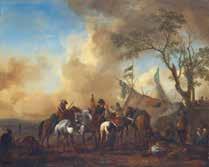
First recorded in 1742, in the collection of a certain Monsieur Dinet, Paris (recorded on the print made after the painting by Jean Moreau, under the title ‘Gardes de cavalerie’; see B. Schumacher, Philips Wouwerman (1619-1668): The Horse Painter of the Golden Age, 2 vols., Doornspijk 2006, vol. 1, p. 300, under no. A 321); acquired at some unknown date by the Amsterdam merchant Pieter van Winter (1745-1807), Amsterdam (see R. Priem, ‘The “most excellent collection” of Lucretia Johanna van Winter: The years 1809-22’, Simiolus 25 (1997), nos. 2-3, pp. 103-235, p. 222, no. 172); in 1807 by descent to his children Josua Jacob, Lucretia (‘Creejans’) and Anna Louisa Agatha (‘Annewies’) van Winter, as part of a larger, undivided collection, which was ultimately divided between the two sisters, after they had bought out their brother, Josua Jacob; Anna Louisa Agatha van Winter (1793-1877), married Willem van Loon (1794-1847) in 1815, Amsterdam (on 31 January 1815, this painting valued at 1,800 guilders, see Priem 1997, pp. 196, 230, no. 172, pp. 196, 226, no. 172); upon her death in 1877, by descent to the children, by whom sold, together with the collection of paintings, to Gustave, Baron de Rothschild (1829-1911), Paris; by whom sold, and acquired at some unknown date by Adolf Joseph Bösch (died 1884), Döbling, near Vienna (after his death, sold at auction Vienna, 28 April 1885, lot 54, for 21,000 florins to Bourgeois); art dealer Bourgeois Frères, Cologne & Paris, 1885; art dealer M. Knoedler & Co., New York (in 1901 bought for £800, together with art dealer Lawrie & Co., London); acquired by Henry Clay Frick on 18 September 1901 for $9,000, bought at the same time as Vermeer’s Girl Interrupted at her Music in The Frick Collection (see Knoedler Painting Stock Book, vol. 5, p. 49, stock no. 9554, via Getty Provenance Index, consulted on 28 April 2022); acc. no. 1901.1.136 9
Presumably made for Vermeer’s patron, Pieter Claesz van Ruijven (1624-1674), Delft; by descent to his widow, Maria de Knuijt, 1674; after her death in 1681 by descent to their daughter, Magdalena van Ruijven, whose husband, Jacob Dissius, inherited upon her death in 1682 the paintings by Vermeer from her estate; after the death of Dissius in 1695, the Vermeers were sold at auction in Amsterdam (sale Amsterdam, 16 May 1696, lot 11, for 44 guilders and 10 stuivers to an unknown buyer; see Montias 1989, doc. 439, no. 11: ‘Een Soldaet met een laggent Meysje, zeer fraei’ [‘A soldier with a laughing girl, very fine’]); in the nineteenth century the painting resurfaced in the possession of the English collector Charles Scarisbrick (1801-1860), Scarisbrick Hall, Lancashire (after his death, sold at auction London, Christie’s, 10 May 1861, lot 89, as a painting by Pieter de Hooch, for £87 3s to Lee Mainwaring); acquired at an unknown London sale for 235 guineas by Joseph-Louis Léopold Double (1812-1881), Paris, presumably acting on the advice of Vermeer’s rediscoverer, Theophile Thoré (after Double’s death, sold at auction Paris, 30 May 1881, lot 16, for Fr. 88,000 to Gauchey for Demidov); Pavel Pavlovich (1839-1885), 2nd Prince Demidov, San Donato and Villa di Pratolino, near Florence; his widow, Hélène Trubetskaya (estate divided in 1887); in or before 1891 in the possession of Samuel S. Joseph, London, and from 1900 in the possession of his widow, Edith Joseph; art dealer M. Knoedler & Co., New York, 1911 (who, together with three other dealers, Colnaghi’s, Lippmann and Sulley & Co., bought the entire Joseph Collection on 29 May 1911 for £75,000, each dealer owning a ¼ share in this Vermeer); acquired by Henry Clay Frick on 11 November 1911 for $225,000 (see Knoedler Painting Stock Book, vol. 5, p. 225, stock no. 12408, via Getty Provenance Index, consulted on 28 April 2022); acc. no. 1911.1.127
Philips Wouwerman (1619-1668)
The Cavalry Camp, c.1660-1665
Panel, 43 x 53 cm
The Frick Collection, New York
provenance


